What low-height wildflowers would work in a narrow boulevard?
Ashleigh Penrod
3 years ago
last modified: 3 years ago
Featured Answer
Comments (6)
OldDutch (Zone 4 MN)
3 years agolast modified: 3 years agoAshleigh Penrod thanked OldDutch (Zone 4 MN)Related Discussions
How to kill annual grasses; not native wildflowers? Herbicide?
Comments (4)Found this question while on a different search. Long past the initial inquiry, but some ideas if you're still dealing with this. If the weed grasses are identified correctly, you could consider using Imazapic herbicide (Plateau, Panoramic, or a generic) at 4 to 8 ounces per acre for control with minimal damage to the desirable native wildflowers and grasses, and possibly none depending on what was in your planted mix and what rate you use. Use higher rates if there is a lot of growth or old plant litter. Use lower rates if the site has been cleaned of by burning. It can be applied both Pre-emergent (like right after a burn or mowing) or Post-emergent after the weeds are up, but works best if done early in the growing season before the weeds get too far along. Can be broadcast sprayed over the entire area or selectively sprayed with a wand to avoid application to desirable plants. Another herbicide that works well is Mesotrione, but best applied by selective spraying with a wand as it may cause more damage to some of the native wildflowers....See Morewould small high windows work here?
Comments (25)justgotabme - Oh how pretty! Thank you! I'm impressed with the shelves. It does help me visualize that space better. Thanks so much for doing this work. This is just what I was picturing until I read valinsv's comment below about the header post - duh! I think that pretty well takes out the idea of high windows in that room. And since I won't do low ones, well, shoot, onward to better lighting I guess. I love the wood mantle and that's on my to do list too! Bronwynsmom - I forgot to say thanks for picture to show me what you meant by the angle of the chairs. I've been wondering how to angle them. Will move them and then take a picture and try to mockup what else to go with them. Side tables are going to be a pain until we do the floor and can add some floor outlets. I don't want cords trailing out to the table. When 75 pounds of German Shepherd start running around there's no telling what she'll trip on. :) Here are a couple of fuller views of the room. I'm not a fan of the columns, they look just sorta stuck in there (which they were since the previous owners took out a wall.) Someday low bookcases linking to the columns somehow would be nice. Railing goes on the stairs next week. And then doors on the under stair thing which means finding a new place for dog toys. Bronwynsmom , when you talked about light and the art, did you mean direct the light overhead toward the light in the painting? Here's a better picture of it for those of you who have had kind words. I do love it and hope to use the colors in it to help me bridge to the dining area. Can't wait to get the room done so I can play with decorating that mantle. Here is a link that might be useful: a few more pictures of inside the house/larger even...See Morewould this oven height work?
Comments (17)Nancy, Thanks for understanding my concerns. And for the great idea pics! As for my constraints, if you look at the photo above that shows the entire current kitchen/nook area from the perspective of the den, you'll see that there is only a very small space for 30" fridge and 24" oven on the wall before the breakfast nook starts. The wall that both appliances are on is only about 50" between the garage door and support beam (that big beam and support pole that dissects the space would cost me $6000 to move btw) There is a matching support beam in the wall. So, when you do the math of fridge+oven+cabinets... things are spilling over. My plan that wall is to reframe the garage wall (which is a support wall for the upstairs) and build a small recess into the garage wall that will accomodate half of a 24x36x70 counter depth fridge (bought but not yet delivered) and a pullout, narrow cabinet pantry. That shouldn't impact parking in the garage, but saves some floor space. I want to add 12x20" ceililng to floor cabs around the breakfast space, and along the top of it too (maybe - still fuzzy there) to gain more storage. My plan is to ensure the fridge no longer cramps the breakfast noon or blocks light from the little window. This was my rough draft.... I like how you angled your dishwasher - and raised it. Where are the glasses/plates at? The end by the oven? I think one reason I'm torn about raising the oven in this way is that ovens are generally wider than dishwashers. I've already lived iwth a 24" oven for 20+ years.And unless its a gaggenau with side swing door, I'd like at least a 27" before I die. :) A secondary issue if I put the oven on the end of the peninsula and raise it.... then where will I put the microwave??? I thot about putting it under the double cabinets to the right of hte sink, except I discovered there are no right hand swing microwaves! So it would open the wrong way!...See MoreConifer suggestions for boulevard privacy screen
Comments (32)btw embo ... that looks like a winter lawn in my MI .... not necessarily underfed ... at this time of year ... what i look for.. is weeds ... and that lawn is prime ... its been cared for in that regard.. which makes me thinks it has also been properly fed ... OP ... do keep in mind ... most conifers.. trees... do not need to be fed ... they are never HUNGRY ... but we insure the soil is fertile.. and take action if need me ... which IMHO ... is rare ... and in fact.. when your plants get going.. and actually put roots out under the lawn ... and if that lawn is fertd.. these things will get more than enough of anything they may need ... finally ... lawn watering.. is rarely proper watering for new transplants... do not rely on such .... though.. once fully established ... they should be rather free range ... refer to watering at the link ... ken https://sites.google.com/site/tnarboretum/Home/planting-a-tree-or-shrub...See MoreOldDutch (Zone 4 MN)
3 years agolast modified: 3 years agoAshleigh Penrod
3 years agolast modified: 3 years ago
Related Stories
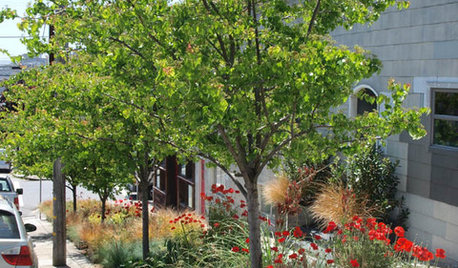
CURB APPEALTake Your Hell Strip to Heavenly Heights: 8 Design Ideas
Trade weedy dirt and trash for a parking strip filled with wispy grasses, low-growing flowers and textural trees
Full Story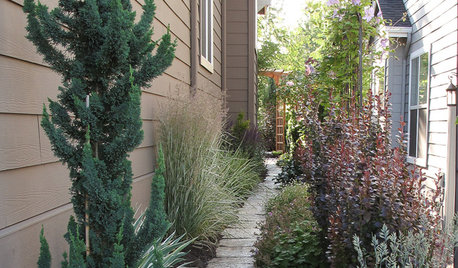
SIDE YARD IDEASNarrow Trees for Tight Garden Spaces
Boost interest in a side yard or another space-challenged area with the fragrance and color of these columnar trees
Full Story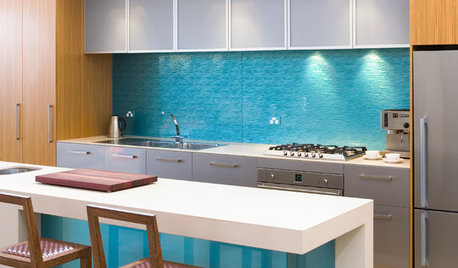
KITCHEN DESIGNHouzz Quiz: Which Kitchen Backsplash Material Is Right for You?
With so many options available, see if we can help you narrow down the selection
Full Story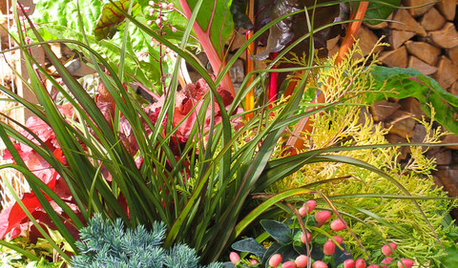
PLANTING IDEASStretch the Budget, Seasons and Style: Add Conifers to Your Containers
Small, low-maintenance conifers are a boon for mixed containers — and you can transplant them to your garden when they’ve outgrown the pot
Full Story
GARDENING GUIDES10 Top Native Plants for the U.S. Southeast
For a low-maintenance and wildlife-friendly landscape, use Southern natives that withstand heat and humidity
Full Story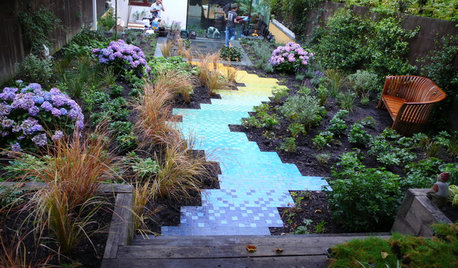
LANDSCAPE DESIGN24 Garden Paths to Inspire Memorable Journeys
Winding or straight, narrow or wide, densely or sparsely planted — there’s more than one way to design a walk
Full Story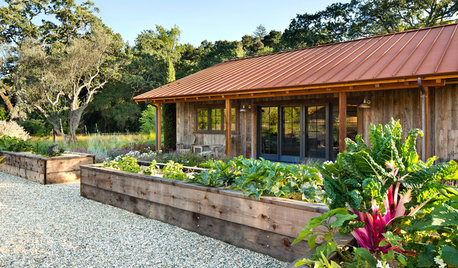
EDIBLE GARDENSHow to Grow Your Own Sweet Summer Crops
This guide will help any gardener get started on growing the freshest warm-season veggies and berries for summer
Full Story
GARDENING GUIDESWarm Up Your Garden With Orange Flowers
Hummingbirds and butterflies are not the only ones who will notice when you introduce a blaze of orange into your garden
Full Story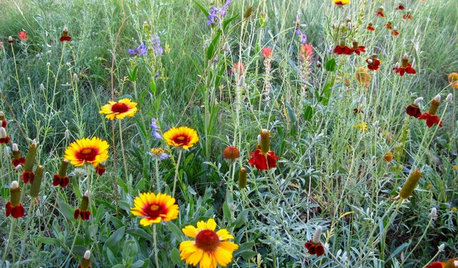
LANDSCAPE DESIGNCreate a Wildlife-Friendly Meadow in Your Small Garden
Find out how to add prairie charm to your landscape — whether it’s a backyard, a rooftop or a half-dozen pots on a patio
Full Story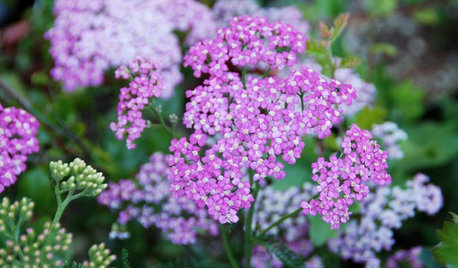
GARDENING GUIDESGreat Design Plant: Achillea Millefolium for Dry California Gardens
Yarrow attracts painted ladies and scares off garden thugs in native habitats and vegetable gardens
Full Story


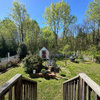
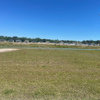

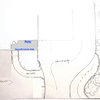
Christopher CNC